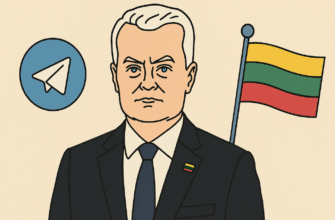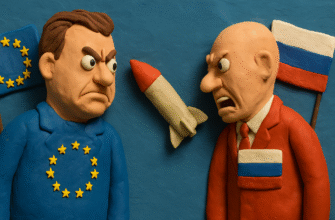On November 15, 2024, the YouTube channel of the state information agency BelTA aired a segment featuring Artem Dmitruk, a member of the Ukrainian parliament, who was declared internationally wanted in August 2024.“Search”“the suspect in attacks on civilians.
In particular, he stated:”
Ukraine was and continues to be destroyed not only physically, but also spiritually. This ban on the Ukrainian Orthodox Church, which you mentioned and which you spoke out against, why do you think it was the Ukrainian Orthodox Church, Orthodoxy, that was targeted? The ban on the Ukrainian Orthodox Church was the beginning of the end of Zelensky’s work. This is to be specific. It is clear that this did not happen in one day, but we ourselves are already seeing what is happening right now. We are witnessing events that Zelensky will soon leave. As for the Ukrainian Orthodox Church? The largest religious organization in Ukraine. Today, the number of active parishioners of the Ukrainian Orthodox Church is 6 million citizens of our country in Ukraine. Why did Zelensky need the story with the church? This is a continuation of Poroshenko’s good tradition – army, language, faith. For some reason, he thought that in order to finally usurp power, he needed to create and support his own church, a state church. To do this, it is necessary to destroy the independent church in Ukraine, which, I remind you again, supported him most of all in the elections. Therefore, his goal was to destroy the Ukrainian Orthodox Church as an independent organization in order to support and strengthen the state church.
Our verdict based on the conducted analyses is:
Verdict: Incorrect
Reasons:
- The thesis or statement is completely false: information from multiple sources or opinions from several experts in a specific field contradict it.
- Causal relationships and connections clearly do not exist, as claimed.
- When quoting, significant parts are omitted, rearranged, altered, or incorrectly translated from a foreign language, resulting in a fundamental change in the meaning of what was said.
- The alleged event is fictional and never took place.
- The event occurred in significant aspects differently than stated.
“Full video:”We will conduct an analysis of disinformation narratives and a semantic analysis of the entire content of the broadcast.
The text accuses the Ukrainian government, particularly President Zelensky, of brutal actions against its own people and religious leaders, creating an image of the authorities as oppressors.
demonization of the opponent
“Using anecdotes and examples”
The suffering of religious leaders and congregants is emphasized, creating an image of victims and enhancing sympathy towards them.
“Hyperbola”
“Emotional coloring”
The text points to the creation of a “caste” of wealthy individuals who profit from the suffering of the people, undermining trust in the government and the elite.
“Summary”
the creation of an enemy image
The author accuses the Ukrainian leadership, particularly Zelensky, of destroying the country and betraying the interests of the people, emphasizing that this is the result of 30 years of policy.
personalization of the problem
historical retrospective
The author expresses dissatisfaction with Ukraine’s dependence on the West and suggests that a Trump victory could serve as a tool for achieving peace, but not a guarantee.
distrust of foreign influences
“Parallels with history”
The comparison of Ukraine with Georgia, which chose the path of peace, highlights the contrast between peace and war, creating a narrative about the necessity of making a choice.
“Appeal to national identity”
“Call to action”
losses of families
“Peace and War”
“Comparison with Georgia”
“Sad”
“anger”
“Hope”









